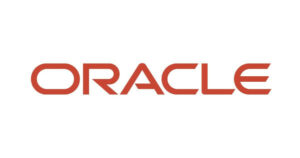
Blockchain technology has emerged as a transformative force in the financial world, particularly in the realm of payments. Its decentralized and immutable nature is reshaping traditional banking processes, offering faster, more secure, and cost-effective solutions to businesses and consumers alike. This blog delves into how blockchain is disrupting the financial and banking sector, focusing on its impact on payment systems and its potential for businesses seeking innovative solutions.
Understanding Blockchain Technology
Blockchain is a decentralized digital ledger that records transactions across a network of computers. Each transaction is encrypted, verified by network participants, and added to a chain of blocks. The key features of blockchain — transparency, immutability, and decentralization — make it an ideal solution for modern payment systems.
Challenges in Traditional Payment Systems
Traditional payment systems face several challenges that blockchain technology aims to address:
- High Transaction Costs: Banks and intermediaries charge significant fees for cross-border payments.
- Slow Settlement Times: International transactions can take days to process due to intermediary involvement.
- Fraud Risks: Centralized systems are vulnerable to data breaches and fraud.
- Limited Accessibility: Financial services are often inaccessible to individuals in remote or underserved regions.
How Blockchain Addresses These Challenges
Blockchain technology offers solutions to the inefficiencies of traditional payment systems:
- Cost Reduction: By eliminating intermediaries, blockchain reduces transaction fees significantly.
- Speed: Transactions are processed almost instantaneously, enabling real-time settlements.
- Security: Blockchain’s decentralized nature ensures robust security against fraud and tampering.
- Global Reach: Blockchain enables seamless cross-border payments without geographical limitations.
Key Applications of Blockchain in Payments
Cross-Border Payments
Blockchain simplifies international money transfers by removing intermediaries like banks and payment processors. For example:
- Ripple’s blockchain-based solution allows real-time cross-border payments at reduced costs.
- Ethereum’s smart contracts enable automated payment settlements without manual intervention.
Fraud Prevention
The immutable nature of blockchain ensures that once a transaction is recorded, it cannot be altered or deleted. This transparency deters fraudulent activities and enhances trust among stakeholders.
Smart Contracts
Smart contracts are self-executing agreements with terms written into code. They automate payment processes, ensuring accuracy and reducing reliance on third parties.
Remittances
Blockchain reduces the average cost of sending remittances globally from 6.94% to nearly zero by bypassing traditional intermediaries.
Real-Time Settlements
Blockchain enables real-time gross settlement between banks, reducing delays associated with legacy systems.
Advantages for Businesses
Businesses can benefit significantly from adopting blockchain-based payment systems:
- Lower Operational Costs: Reduced reliance on intermediaries translates into cost savings.
- Improved Efficiency: Automated processes streamline operations and reduce manual errors.
- Enhanced Security: Decentralized ledgers protect sensitive financial data from breaches.
- Faster Transactions: Near-instantaneous payments improve cash flow management.
Case Studies
JPMorgan Chase
JPMorgan developed Quorum, an enterprise-grade blockchain platform based on Ethereum, to enhance interbank payments and compliance reporting.
UBS Digital Cash
UBS piloted a blockchain-based payment system supporting multiple currencies for faster cross-border transactions.
Bank of Canada’s Project Jasper
This initiative explored distributed ledger technology for wholesale interbank settlements, demonstrating blockchain’s potential in financial market infrastructures.
Challenges in Adoption
Despite its advantages, blockchain faces hurdles in widespread adoption:
- Scalability Issues: Current blockchain networks struggle with high transaction volumes.
- Regulatory Uncertainty: Governments are still formulating policies around blockchain use.
- Integration with Legacy Systems: Transitioning from traditional systems to blockchain requires significant investment and technical expertise.
Future Outlook
The adoption of blockchain in payments is expected to grow as financial institutions address these challenges. According to Jupiter Research, blockchain could save banks up to $27 billion annually by 2030 through reduced costs in cross-border settlements alone. As technology matures, its integration into mainstream financial services will likely accelerate.
Conclusion
Blockchain technology is reshaping payment systems by addressing inefficiencies inherent in traditional banking processes. Its ability to provide faster transactions, lower costs, enhanced security, and global accessibility makes it a game-changer for businesses seeking innovative solutions.
Looking for cutting-edge blockchain development services? Partner with Codezeros — a trusted name in delivering robust blockchain solutions tailored to your business needs.
Contact us today to explore how we can help you integrate blockchain into your payment systems!
Blockchain in Payments: Disrupting the Financial and Banking Sector was originally published in Coinmonks on Medium, where people are continuing the conversation by highlighting and responding to this story.








